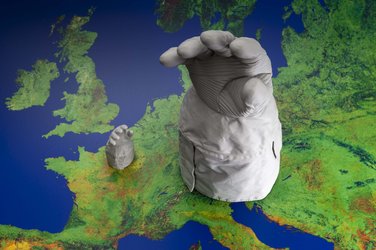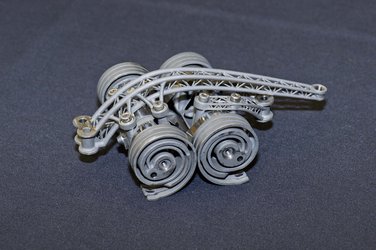Accept all cookies Accept only essential cookies See our Cookie Notice

About ESA
The European Space Agency (ESA) is Europe’s gateway to space. Its mission is to shape the development of Europe’s space capability and ensure that investment in space continues to deliver benefits to the citizens of Europe and the world.
Highlights
ESA - United space in Europe
This is ESA ESA facts Member States & Cooperating States Funding Director General Top management For Member State Delegations European vision European Space Policy ESA & EU Space Councils Responsibility & Sustainability Annual Report Calendar of meetings Corporate newsEstablishments & sites
ESA Headquarters ESA ESTEC ESA ESOC ESA ESRIN ESA EAC ESA ESAC Europe's Spaceport ESA ESEC ESA ECSAT Brussels Office Washington OfficeWorking with ESA
Business with ESA ESA Commercialisation Gateway Law at ESA Careers Cyber resilience at ESA IT at ESA Newsroom Partnerships Merchandising Licence Education Open Space Innovation Platform Integrity and Reporting Administrative Tribunal Health and SafetyMore about ESA
History ESA Historical Archives Exhibitions Publications Art & Culture ESA Merchandise Kids Diversity ESA Brand CentreLatest
Space in Member States
Find out more about space activities in our 23 Member States, and understand how ESA works together with their national agencies, institutions and organisations.
Science & Exploration
Exploring our Solar System and unlocking the secrets of the Universe
Go to topicAstronauts
Missions
Juice Euclid Webb Solar Orbiter BepiColombo Gaia ExoMars Cheops Exoplanet missions More missionsActivities
International Space Station Orion service module Gateway Concordia Caves & Pangaea BenefitsLatest
Space Safety
Protecting life and infrastructure on Earth and in orbit
Go to topicAsteroids
Asteroids and Planetary Defence Asteroid danger explained Flyeye telescope: asteroid detection Hera mission: asteroid deflection Near-Earth Object Coordination CentreSpace junk
About space debris Space debris by the numbers Space Environment Report In space refuelling, refurbishing and removingSafety from space
Clean Space ecodesign Zero Debris Technologies Space for Earth Supporting Sustainable DevelopmentLatest
Applications
Using space to benefit citizens and meet future challenges on Earth
Go to topicObserving the Earth
Observing the Earth Future EO Copernicus Meteorology Space for our climate Satellite missionsCommercialisation
ESA Commercialisation Gateway Open Space Innovation Platform Business Incubation ESA Space SolutionsLatest
Enabling & Support
Making space accessible and developing the technologies for the future
Go to topicBuilding missions
Space Engineering and Technology Test centre Laboratories Concurrent Design Facility Preparing for the future Shaping the Future Discovery and Preparation Advanced Concepts TeamSpace transportation
Space Transportation Ariane Vega Space Rider Future space transportation Boost! Europe's Spaceport Launches from Europe's Spaceport from 2012Latest

3D-printed bend-based mechanism
Thank you for liking
You have already liked this page, you can only like it once!
It might look like some bizarre alien artwork but this is actually a frictionless gear mechanism, 3D-printed all in one in high-performance stainless steel, designed to enable the precise rotation of items such as satellite thrusters, sensors, telescope lenses or mirrors.
Standard moving parts in space involve friction, and therefore require some kind of lubrication that can potentially lead to unwanted contamination of delicate systems, while also inducing ongoing wear and tear and reducing overall operating life.
By contrast, this is an example of a ‘compliant mechanism’ that transmit force through bending, or ‘elastic deformation’, such as bag fasteners or bows and arrows. Incorporating 24 bendable blades, of which 16 are interlocking, the design serves to reduce the rotation angle by a factor of 10, so to allow a rotary motion with very fine resolution and high repeatability.
ESA Technical Officer Paolo Zaltron explains: “The deformable and rigid parts are built together as one single monolithic structure, avoiding any time-consuming assembly and alignment. Their unusual shapes pushed the boundaries of Additive Manufacturing technologies and are the result of advanced optimization techniques that lead to unprecedented high flexibility and low mass.”
This Compliant Rotation Reduction Mechanism was designed by CSEM in Switzerland, with Swiss company 3D Precision SA undertaking the 3D printing while its performance testing was undertaken by Almatech SA, as part of an ESA Technology Development Element activity.
See a video of the mechanism in operation here. For more details of the activity, click here.
-
CREDIT
CSEM -
LICENCE
ESA Standard Licence

Printed nerves for a satellite

3D-printed replicas of Hans Schlegel's EVA glove

Testing Coco project on ESA's ORBIT flat floor

3D-printed deployment mechanism















 Germany
Germany
 Austria
Austria
 Belgium
Belgium
 Denmark
Denmark
 Spain
Spain
 Estonia
Estonia
 Finland
Finland
 France
France
 Greece
Greece
 Hungary
Hungary
 Ireland
Ireland
 Italy
Italy
 Luxembourg
Luxembourg
 Norway
Norway
 The Netherlands
The Netherlands
 Poland
Poland
 Portugal
Portugal
 Czechia
Czechia
 Romania
Romania
 United Kingdom
United Kingdom
 Slovenia
Slovenia
 Sweden
Sweden
 Switzerland
Switzerland
























